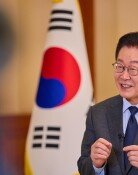Cost for Transferring Administrative Capital to be 45.6 Trillion Won
Cost for Transferring Administrative Capital to be 45.6 Trillion Won
Posted November. 06, 2003 23:12,
The cost for transferring the administrative capital, with the state burdening 11.2 trillion won for this, is estimated to be 45.6 trillion won altogether. The states estimated figure of 11.2 trillion won rose by double the four to six trillion won amount that the Millennium Democratic Party had asserted during the presidential election last year.
Also, it has been analyzed that the administrative capital should be a new city covering 23 million pyong (75.9 million square meters), able to hold 500,000 people, and moreover, it is preferable that the legislative and the judicial branch should be transferred along with the administrative branch.
The New Capital Research Team settled on this general plan and standard for the location selection of the new administrative capital, and held a briefing yesterday at the Central Government Complex with President Roh Moo-hyun, other government officials, and the governor of the Chungcheong area self-government attending.
The government is planning to hold a hearing based on the tentative plan reported that day, and it will hold a discussion with experts and use consultation from related offices to confirm the final plan by January of next year.
According to the research team, it has been estimated that a total of 45.6 trillion won is required for the building expenses of the new administrative capital, with the details as followed:
-government financing of 11.2 trillion won for the construction of Government Complex and other public buildings and area-wide transportation installations such as highways.
-a private share of 34.4 trillion won for construction of housing and commercial business facilities.
The research team explained that the cost for transfer was counted only for the central offices, but as the costs for the related offices and subjects for transfer increased, the total expenses for the project has also increased.
It has been analyzed that it is desirable to form an area measuring 23 million pyong, with 18 million pyong to be used for urban districts holding 500,000 people, and 5 million pyong for a green belt. To enhance the symbolization of the new administrative capital, it should take the form of a new city type, having a fixed distance with the existing cities. The Research Team estimated that if the new administrative capital is constructed, there will 513,000 less people in the Seoul metropolitan area by the year 2030, and the population in the Chungcheong area will increase by 651,000 people. If public institutions also transfer at the same time, the population in Seoul metropolitan area will drop by approximately 1.7 million people.
From this project, it is estimated that an annual 1.1 trillion won in traffic expenses will be reduced, and it will have an effect in reducing the land and housing prices in Seoul by 2.4 and 1.6 percent respectively.
Jae-Seong Hwang jsonhng@donga.com







